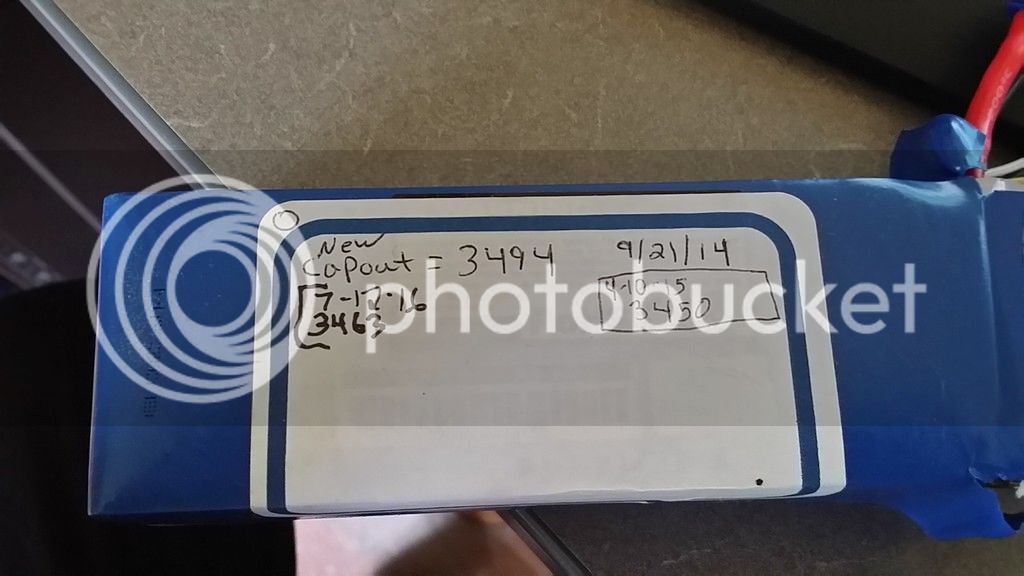Since I have Sanyo 18650GA 3500 cells left over from my battery build I decided I want to do a capacity loss test.
What always concerned me was if having my bike in my hot garage which has fluctuating temps and especially high temps in the New York summer (95F / 35C) has an effect on capacity. I also want to see if keeping my bike almost fully charged at 4.1 volts has an effect on the capacity as I would like to keep my bike fully charged at 4.1 volts if it doesn't make much of a difference.
I choose 4.1, 3.66, and 3.3 volts to see if storing them at different voltages makes any difference. I also placed them in different locations to see if temperature makes any difference.
All cells tested for capacity at around 78F and written on cell before placing them in the following locations: As of July 13th, 2016 all cells have been placed in the following locations.
3 cells in garage, 4.1 volts, 3.66 volts, 3.3 volts TEMP RANGE through year from about: 32F / 0C to 95F / 35C
3 cells in basement, 4.1 volts, 3.66 volts, 3.3 volts TEMP RANGE through year from about: 60F / 15C to 78F / 25C
2 cells in refrigerator at 32F / 0C, 3.66 volts and 3.3 volts
2 cells in freezer at 0F / -18C 3.66 volts and 3.3 volts
1 cell in attic, 3.66 volts, TEMP RANGE through year from about: 32F /0C to 120F / 49C Has the highest temp fluctuations compared to all locations.

What always concerned me was if having my bike in my hot garage which has fluctuating temps and especially high temps in the New York summer (95F / 35C) has an effect on capacity. I also want to see if keeping my bike almost fully charged at 4.1 volts has an effect on the capacity as I would like to keep my bike fully charged at 4.1 volts if it doesn't make much of a difference.
I choose 4.1, 3.66, and 3.3 volts to see if storing them at different voltages makes any difference. I also placed them in different locations to see if temperature makes any difference.
All cells tested for capacity at around 78F and written on cell before placing them in the following locations: As of July 13th, 2016 all cells have been placed in the following locations.
3 cells in garage, 4.1 volts, 3.66 volts, 3.3 volts TEMP RANGE through year from about: 32F / 0C to 95F / 35C
3 cells in basement, 4.1 volts, 3.66 volts, 3.3 volts TEMP RANGE through year from about: 60F / 15C to 78F / 25C
2 cells in refrigerator at 32F / 0C, 3.66 volts and 3.3 volts
2 cells in freezer at 0F / -18C 3.66 volts and 3.3 volts
1 cell in attic, 3.66 volts, TEMP RANGE through year from about: 32F /0C to 120F / 49C Has the highest temp fluctuations compared to all locations.




